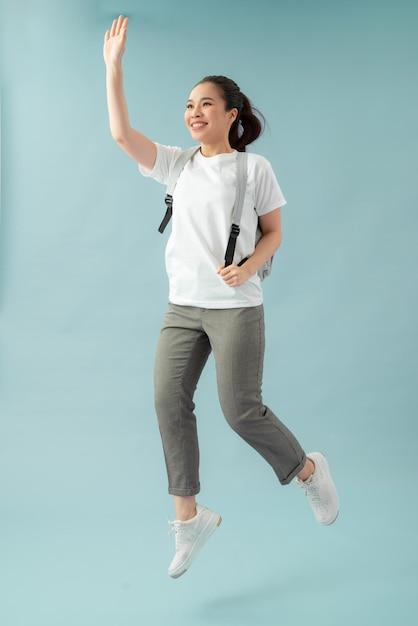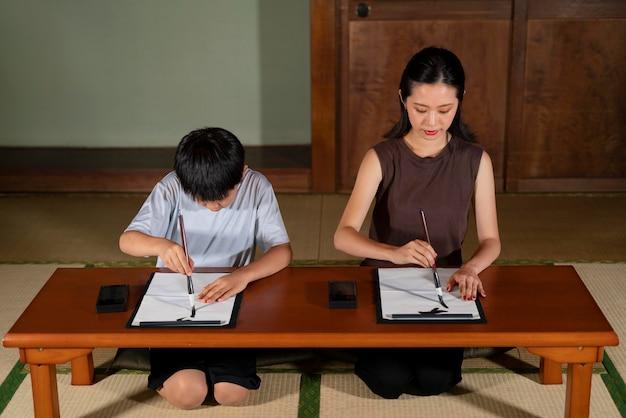Ah, Japan—the land of sushi, cherry blossoms, and anime! Whether you’re planning a trip to Japan or simply have an interest in the culture, learning how to greet someone in their native language is always a great way to show respect and make a good impression. And what better way to start than by discovering how to greet a teacher?
In Japanese culture, teachers hold a position of high regard and are deeply respected. Therefore, it’s essential to know the proper way to greet them. From the common phrases used by Japanese students to the respectful expressions used before and after class, we’ll dive into it all. Join us on this linguistic adventure and unlock the secrets of Japanese teacher greetings!

A Brief Guide to Japanese Teacher Greetings

How to Say Hello to Your Japanese Sensei without Breaking a Sweat
Japanese Greetings 101
When it comes to greeting your teacher in Japanese, you want to make sure you show respect while also avoiding any major embarrassment. After all, nobody wants a red face before class even begins! So, let’s dive into the world of Japanese greetings and master the art of saying hello to your sensei.
Konnichiwa: A Friendly Hello
You’ve probably heard of “konnichiwa” before, which is essentially the Japanese way to say “hello.” It’s a versatile greeting that can be used in a variety of settings, including when greeting your teacher. Just imagine yourself confidently strolling into the classroom and casually saying “konnichiwa” with a nod. You’ll definitely get some extra points for style!
Ohayou Gozaimasu: A Good Morning Greeting
If you’re an early bird and have morning classes, “ohayou gozaimasu” is the perfect phrase to greet your teacher. It’s just like saying “good morning” in Japanese, but with a polite twist. Remember to pronounce it with a gentle, sing-songy tone, and you’ll instantly brighten your sensei’s day.
Genki Desu Ka: How are You
A well-placed “genki desu ka” when you see your teacher shows that you care about their well-being. It’s like asking “how are you?” in Japanese. While your sensei might not have time to delve into a lengthy conversation, they’ll appreciate the gesture. Just don’t be surprised if your teacher tests your Japanese skills and responds in the same manner!
Sensei, Otsukaresama Desu: Recognizing Your Teacher’s Hard Work
Showcasing your awareness of your teacher’s efforts is a great way to earn some extra brownie points. When you see your sensei at the end of the day, a courteous “sensei, otsukaresama desu” will surely brighten their tired face. It’s a way to acknowledge their hard work and say “thank you for your efforts.” Trust me, your teacher will appreciate the kindness.
Raising the Bar: Advanced Greetings
If you want to take your greeting game to the next level, consider learning these more advanced phrases:
Yoroshiku Onegaishimasu: A Polite Introduction
“Yoroshiku onegaishimasu” is a tricky one to pronounce, but once you’ve mastered it, you’ll feel like a true Japanese language pro. This phrase can be used when introducing yourself to a new teacher or at the beginning of a new school year. It’s a way to say “please be kind to me” and sets a positive tone for the future.
Shitsurei Shimasu: Excusing Yourself Politely
Sometimes, you might need to interrupt your teacher or leave the classroom abruptly. In such situations, a quick “shitsurei shimasu” is all you need to show respect and excuse yourself. It’s the Japanese way to say “pardon me” or “excuse me.” Just remember to use it sparingly, as you don’t want to become known as the “excuse me” guru!
Now that you’re armed with these essential Japanese greetings, go forth and impress your sensei! But remember, it’s all about balance—show respect while adding your own touch of style and maybe even a dash of humor. Your teacher will appreciate your effort and smile when you greet them Japanese-style. Good luck, and let the greetings begin!
FAQ: How to Greet a Teacher in Japanese
Welcome to our FAQ section on Japanese greetings for teachers! In this comprehensive guide, we’ll answer all your burning questions about how to greet a teacher in Japanese, along with a few other fun and interesting tidbits. So, without further ado, let’s dive in!
Is It Offensive to Say Namaste
Ah, Namaste! While Namaste is a beautiful greeting in Hindi, it’s not commonly used in Japanese. So, unless you’re specifically speaking to someone who understands Hindi or follows Indian customs, it’s best to stick with a Japanese greeting when addressing a teacher in Japan.
What Is Japanese for Bon Appétit
If you’re looking to wish your teacher a delicious meal, the Japanese phrase to use is “Gochisousama deshita” when they finish eating. It’s a polite way to express gratitude for the meal, similar to saying “Bon appétit” before a meal. Your teacher will appreciate the thoughtfulness!
Is It OK to Have a Waifu
Ah, the world of anime! “Waifu” is a term used by fans to refer to their favorite female anime character. While it’s a fun topic among enthusiasts, it’s best to keep personal interests separate from formal interactions with your teacher.
Who Is the Cutest Anime Girl
Oh boy, that’s a tough one! The beauty of anime lies in its vast variety of adorable characters. Each person may have their own favorite, so it’s difficult to definitively say who the cutest anime girl is. It’s a subjective matter that can spark endless debates among anime lovers!
What Is Yosh in Japanese
“Yosh” is a Japanese expression used to signify determination or motivation, similar to saying “Let’s go!” or “All right!” in English. It’s a common phrase you might hear in sports or competitive settings, but when it comes to addressing a teacher, it’s best to stick to more formal expressions.
What Do Japanese Students Say After Class
At the end of class, it’s customary for Japanese students to say “Arigatou gozaimashita” to express their gratitude to their teacher for the lesson. It means “Thank you very much.” Showing appreciation for your teacher’s efforts is always a good practice!
Who Is the Ugliest Anime Character
Beauty is in the eye of the beholder, so what may be unappealing to one person could be charming to another. It’s best to avoid using terms like “ugliest” when referring to anime characters. After all, everyone has their own unique features and charm in the anime world!
What Are the Greetings in Japanese
When greeting a teacher in Japanese, a common phrase to use is “Ohayou gozaimasu” in the morning, which means “Good morning.” Similarly, “Konnichiwa” is used to say “Hello” or “Good afternoon.” And “Konbanwa” is used to greet someone in the evening, meaning “Good evening.” Greetings are essential to show politeness and respect in Japanese culture.
What Is the Japanese Greeting Said Before a Meal
Before a meal, the Japanese phrase “Itadakimasu” is used as a way to express gratitude for the food. It’s similar to saying “Bon appétit” or “Enjoy your meal.” This phrase acknowledges the effort put into preparing the food and shows respect for the act of eating.
What’s Moshi Moshi Mean
“Moshi Moshi” is a phrase commonly used when answering the phone in Japan. It’s a way to confirm that the call has been connected and to politely inquire who is on the other end. It’s important to note that “Moshi Moshi” is not typically used as a greeting when speaking face-to-face with a teacher.
Who Has the Prettiest Eyes in Anime
Ah, the captivating eyes of anime characters! The beauty of anime lies in the vast creativity of character designs. Each artist may have their own unique style, making it difficult to determine who has the prettiest eyes. Appreciating the artistic variety is all part of the fun!
How Do You Greet a Teacher in Japanese
Finally, we’ve arrived at the heart of our FAQ! When greeting a teacher in Japanese, a respectful and formal phrase to use is “Sensei, konnichiwa” which translates to “Hello, teacher.” This shows politeness and acknowledges their position as an educator. Remember, using proper honorifics is vital when speaking to teachers in Japanese culture.
We hope this FAQ section has answered all your burning questions about greeting teachers in Japanese, along with a few fun anime-related inquiries. Remember, it’s important to show respect and use appropriate language when addressing your teachers, both in Japan and anywhere else in the world. Arigatou gozaimasu for reading!
